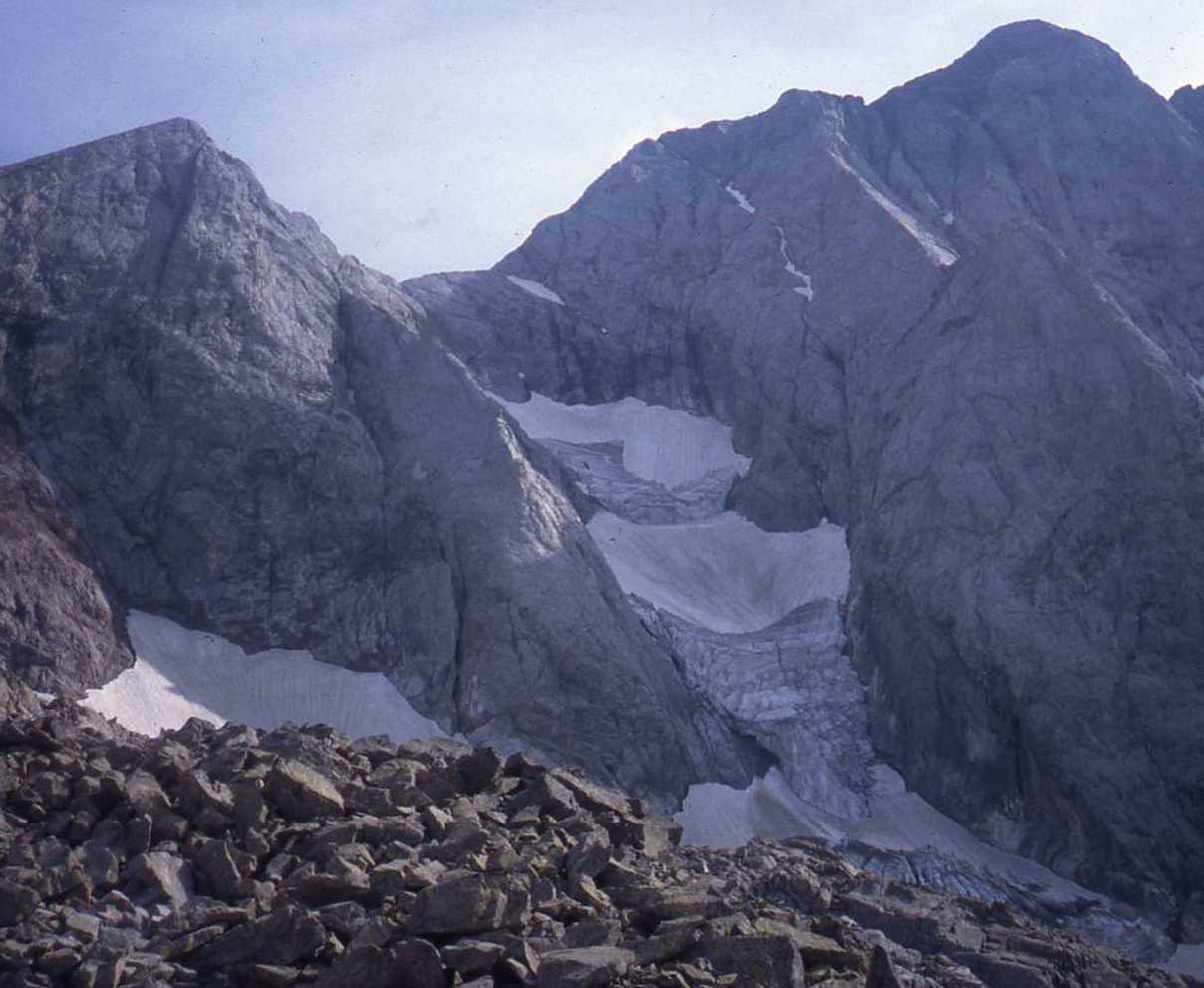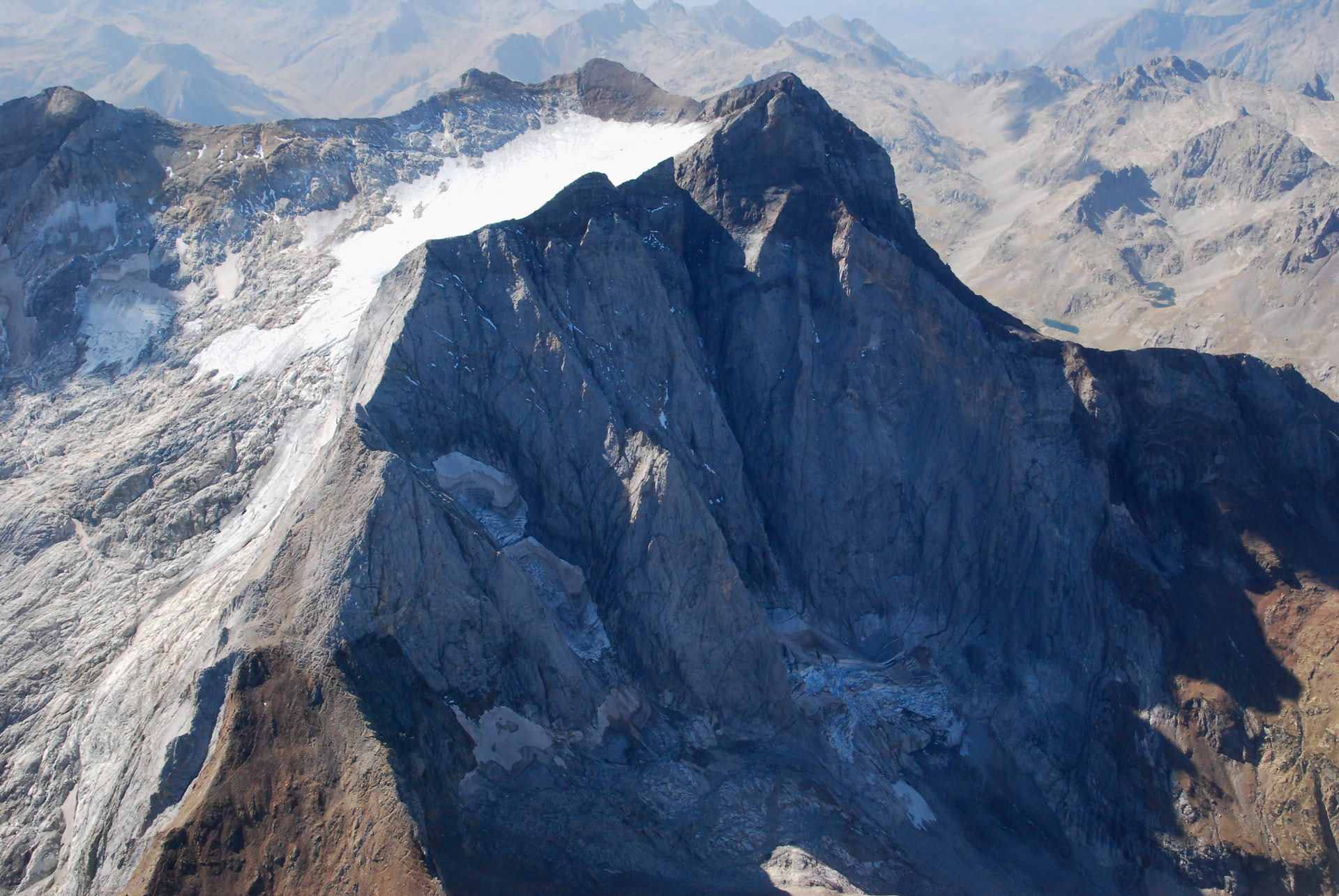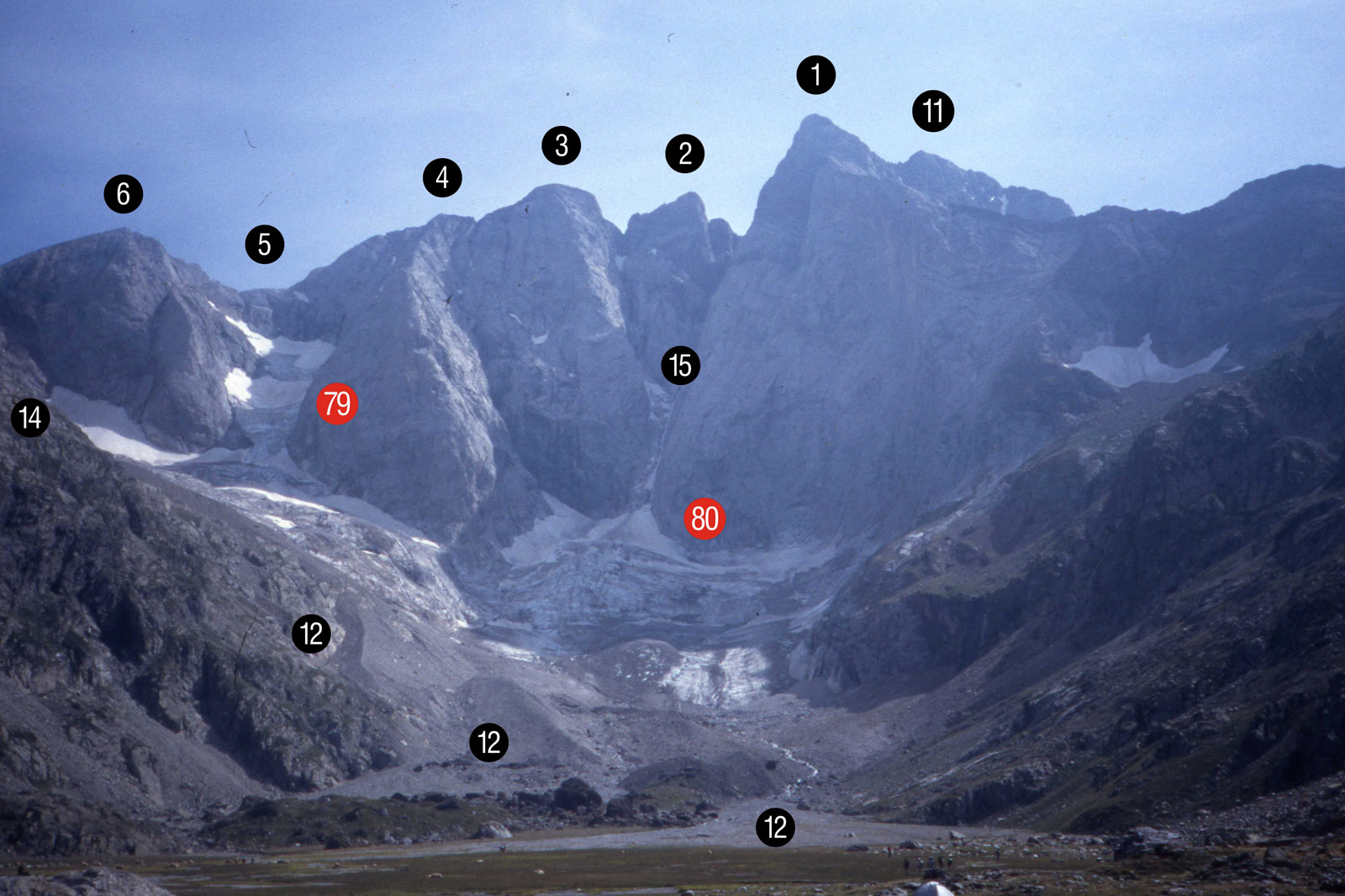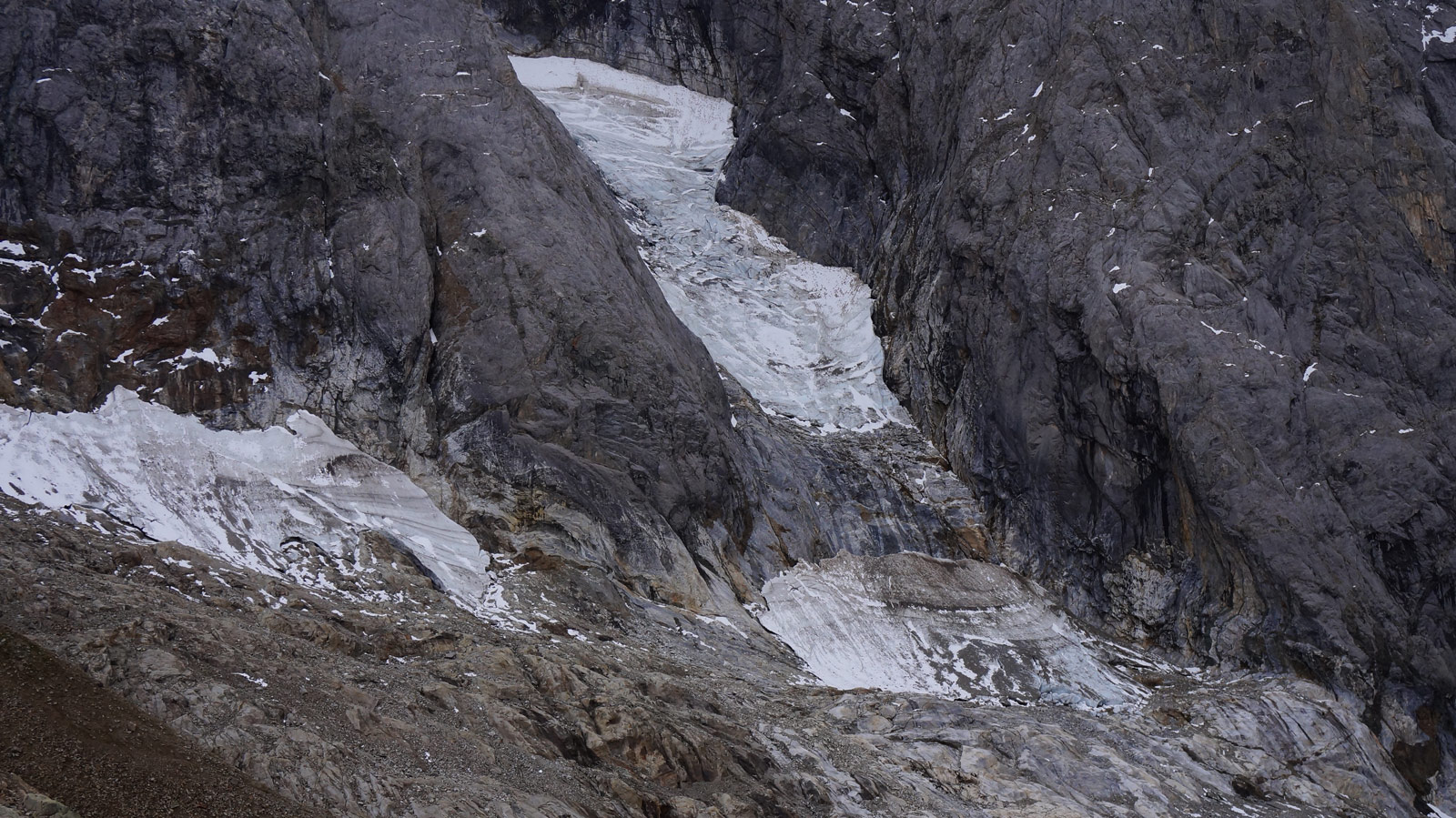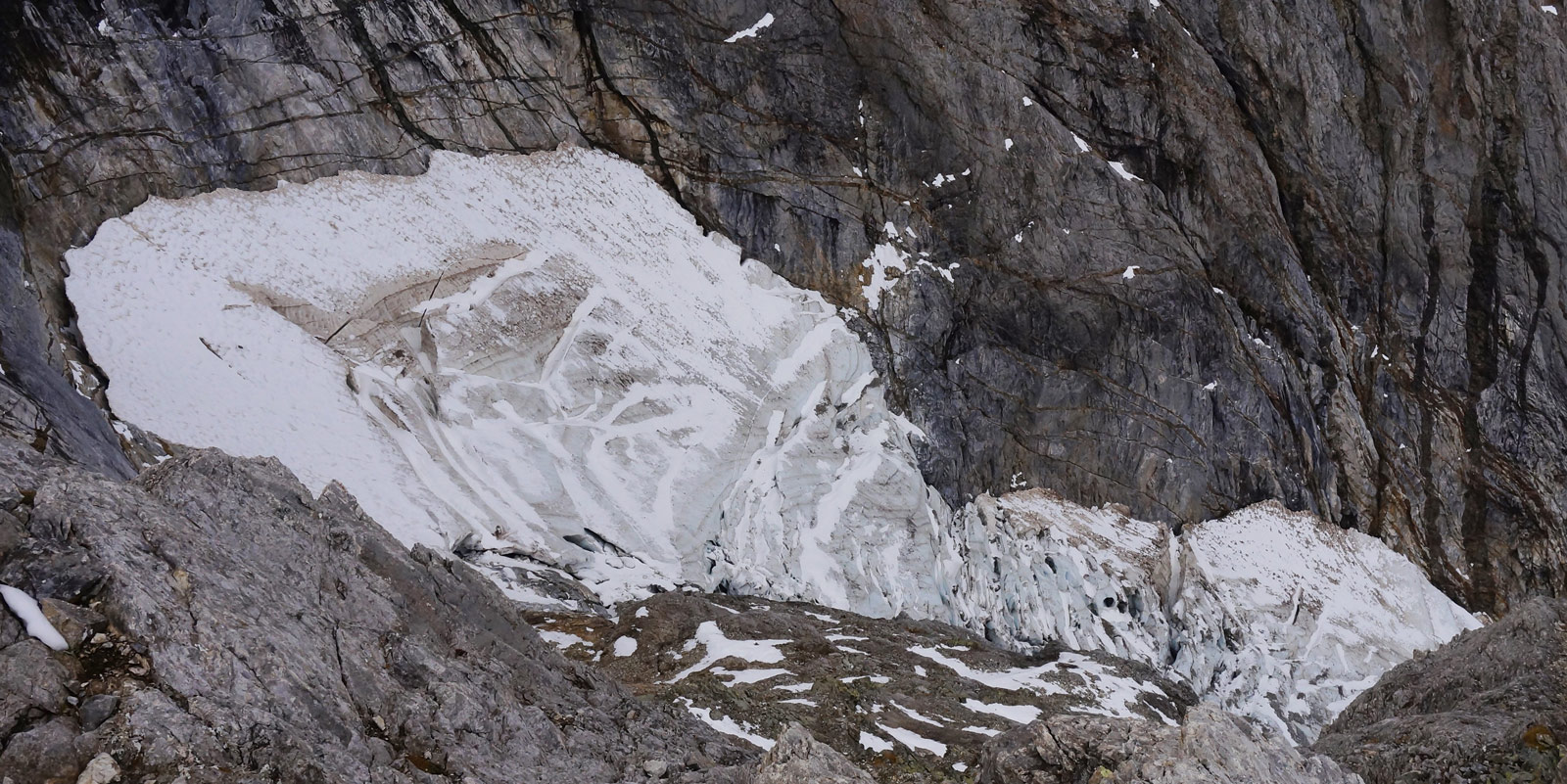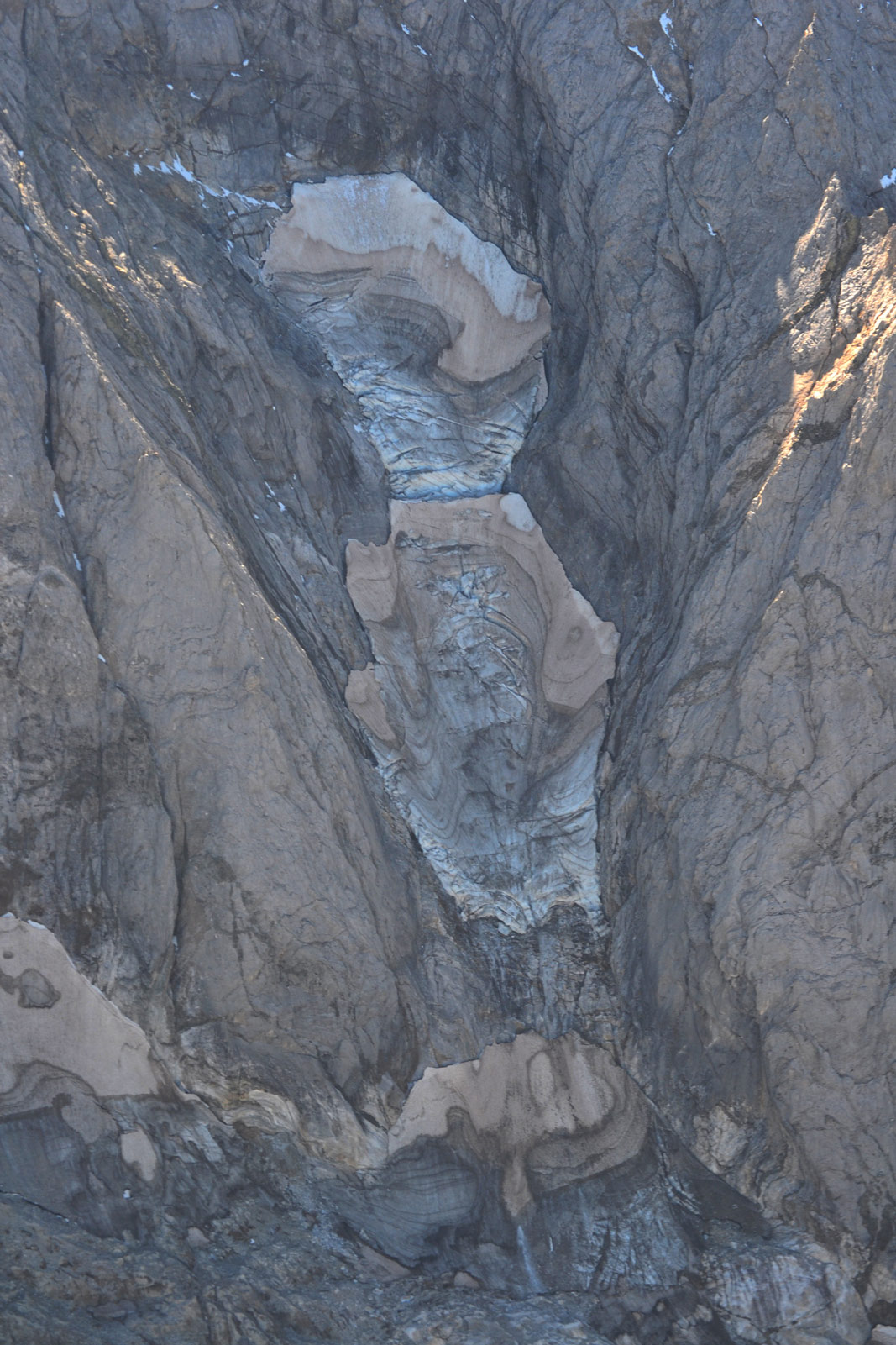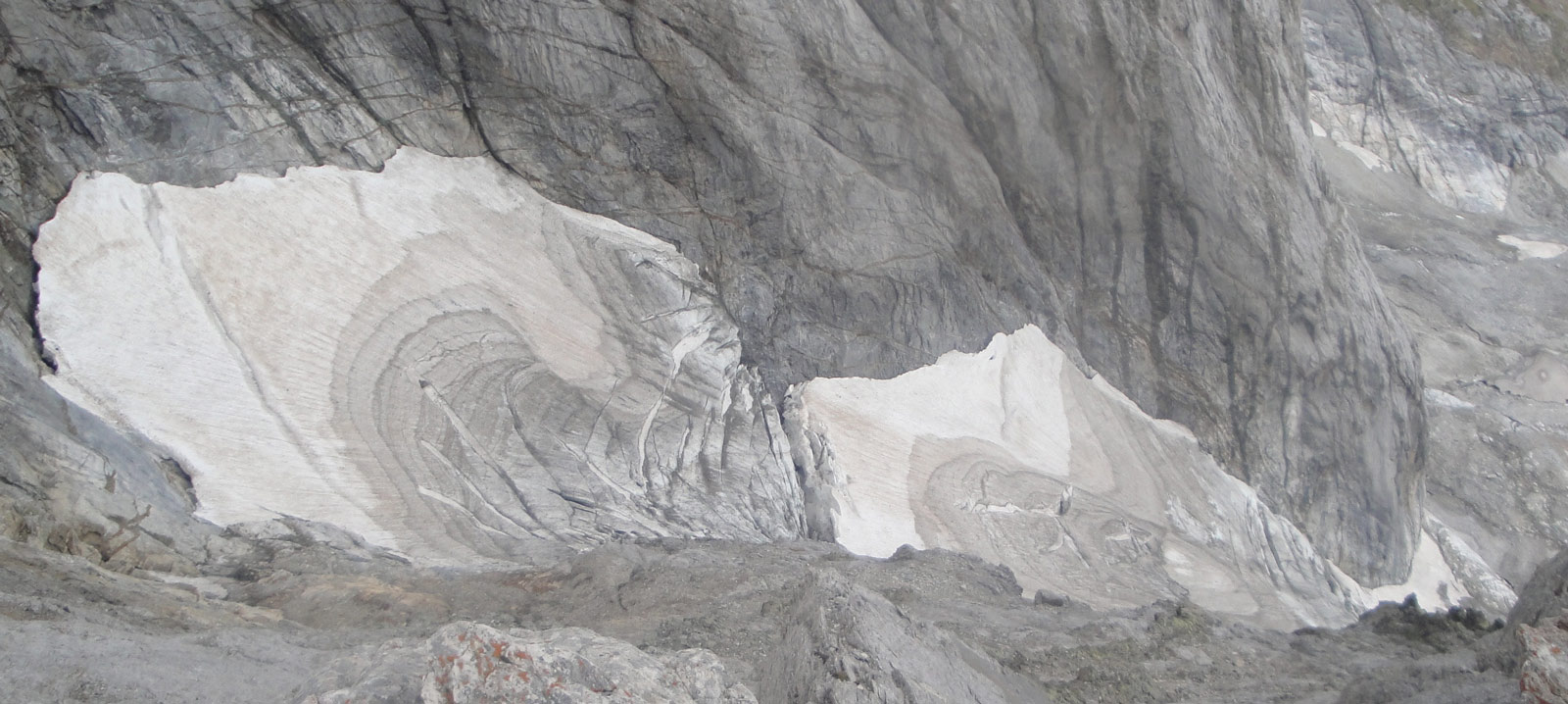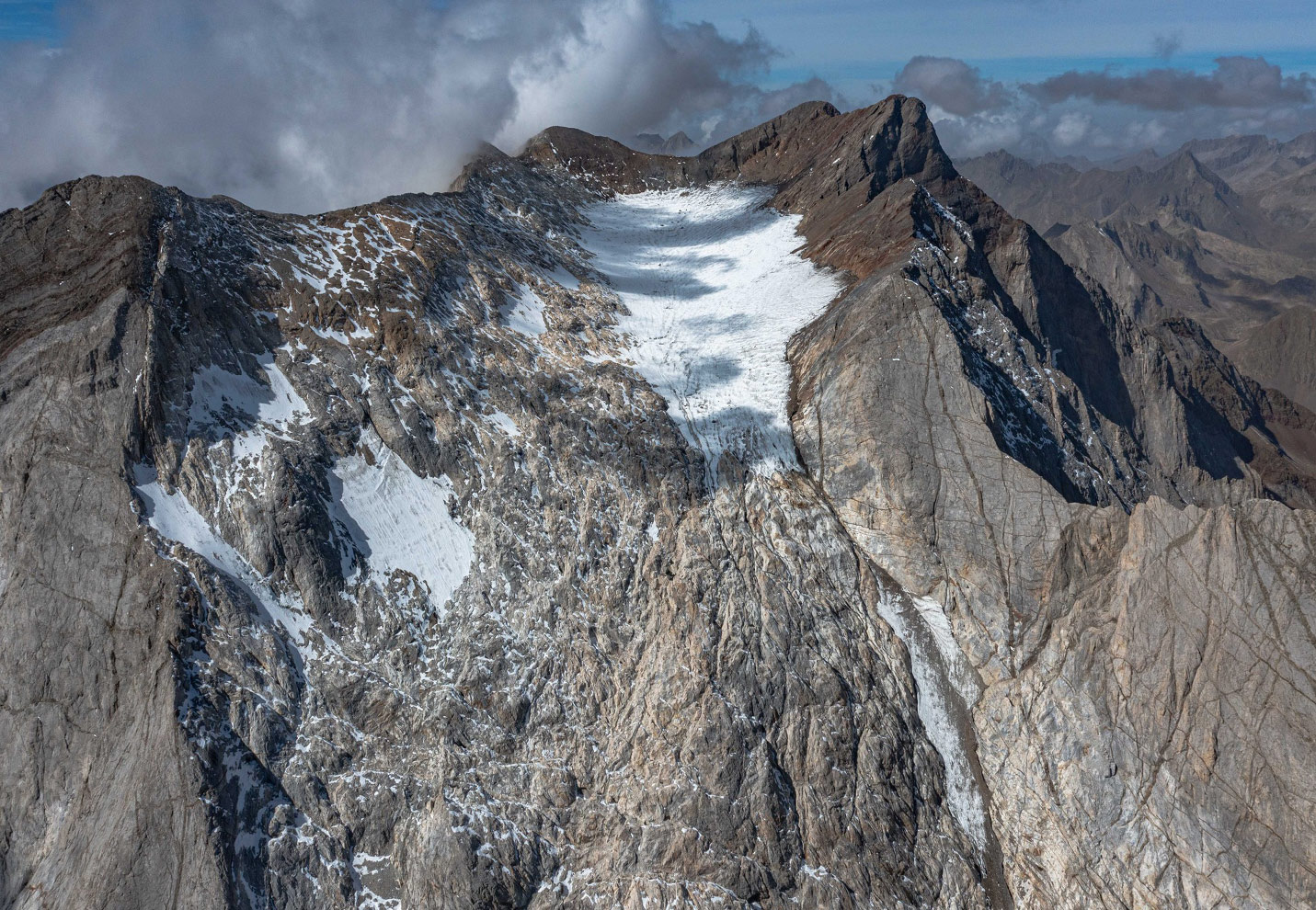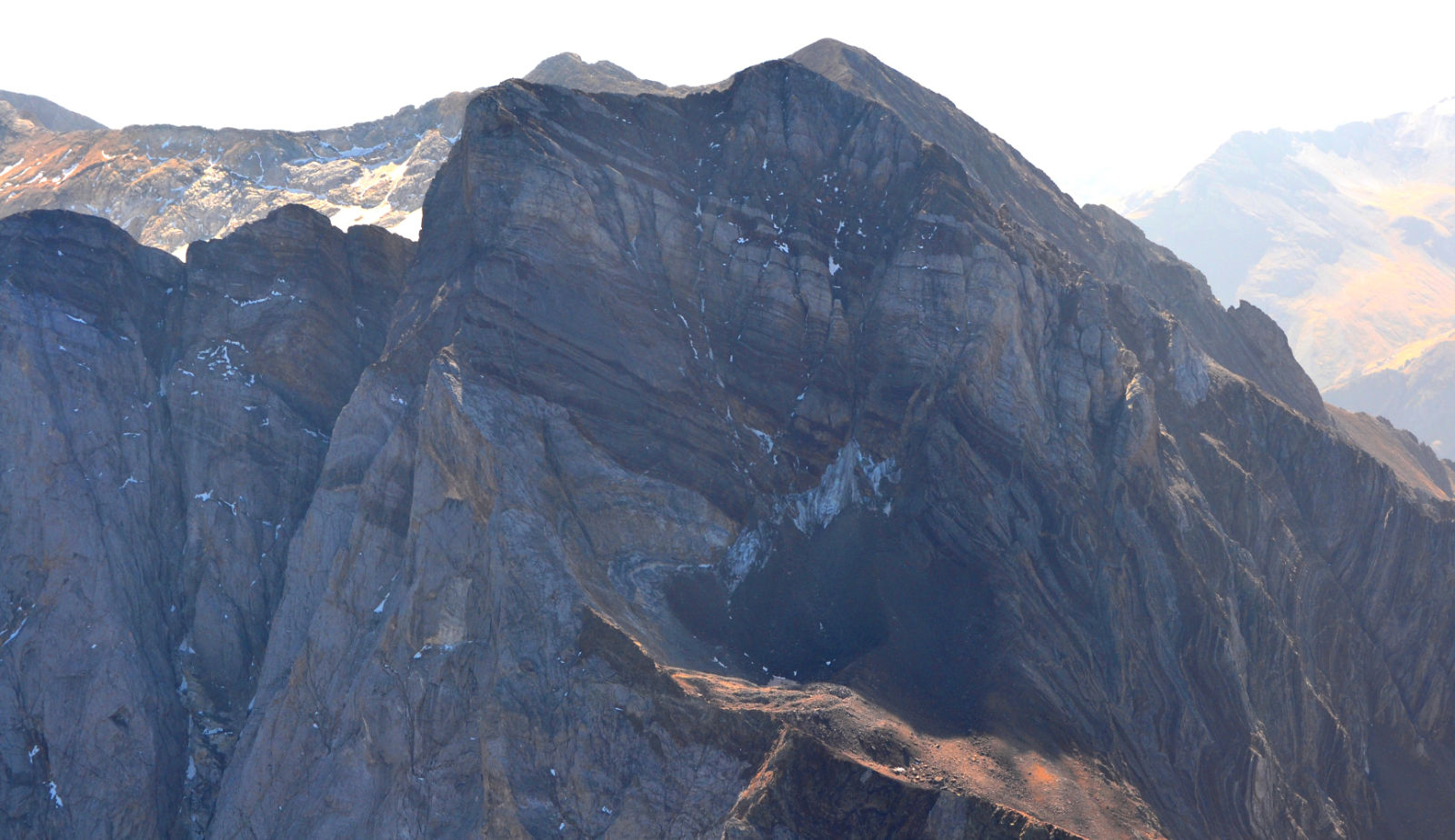On the north-facing slope of Gaube, the Petit Vignemale Glacier extends beneath the Col des Glaciers (2,990 m), on the ridge linking the summit of Petit Vignemale (3,032 m) with Punta Chausenque (3,154 m).
During the Little Ice Age and until the early 20th century, it joined the Oulettes de Gaube Glacier, forming the old North Glacier of Vignemale, which stretched from its head to its front for 1,590 m, making it the fourth longest glacier in the Pyrenees. With an area of 62 ha, it was the second largest in the massif and the ninth largest in the mountain range.
Once separated from the Oulettes de Gaube Glacier, the retreat of the ice tongue turned it into a hanging glacier. Its serac, considered individually, was until less than two decades ago the only one in the Pyrenees and the southernmost in Europe, with the capacity to regenerate on the lower step. In 2007, the connecting link broke for the first time and for some time there was some contact between the two sectors, depending on the movements of the glacier. With the split definitively consolidated, snow and ice slides from the upper sector continued to feed the lower sector, albeit precariously, which rapidly lost its glacial dynamics until it was no longer observable in 2023, when it was classified as a glacier remnant.
The upper fragment maintains a precarious activity that is weakening due to unstoppable melting, which has transformed its powerful front into a fragile sheet of ice. The current surface area of the whole is 1.5 ha and although it is still classified as a glacier, eight Pyrenean heleros already exceed it in surface area.
Este aparato glaciar pertenece al siguiente macizo:
79) Petit Vignemale
Comparativa de imágenes


Comparison of 18 years – 2004 to 2022.
Seracs on the Petit Vignemale Glacier in 2004, from the summit of the same name. (Jordi Camins).
The Petit Vignemale Glacier in 2022. Ten years later, the first autumn snows in October give it a respite and hide its considerable deterioration. (Gabriel Baena).

